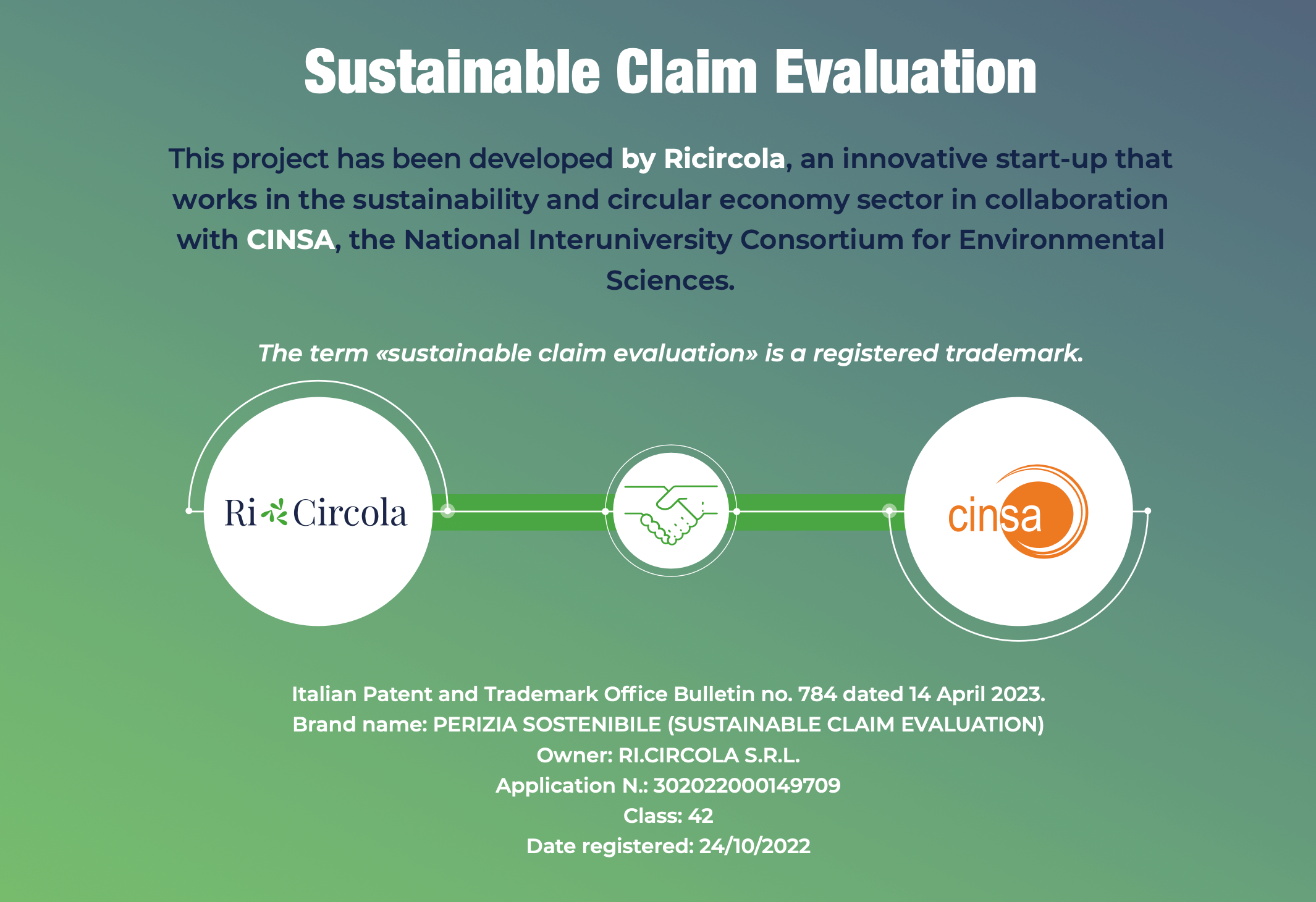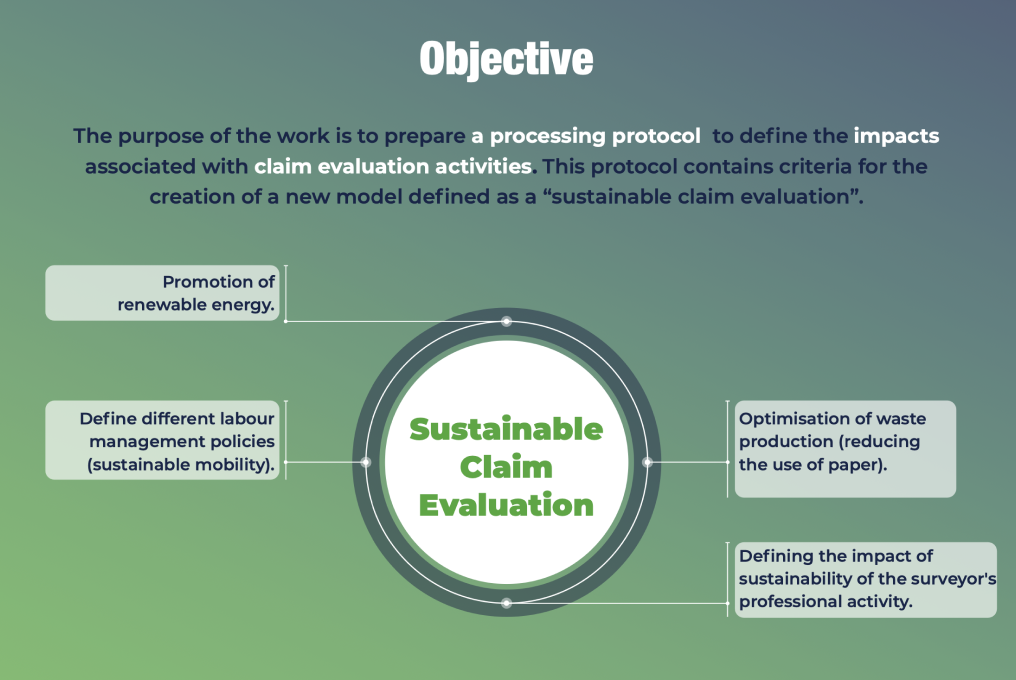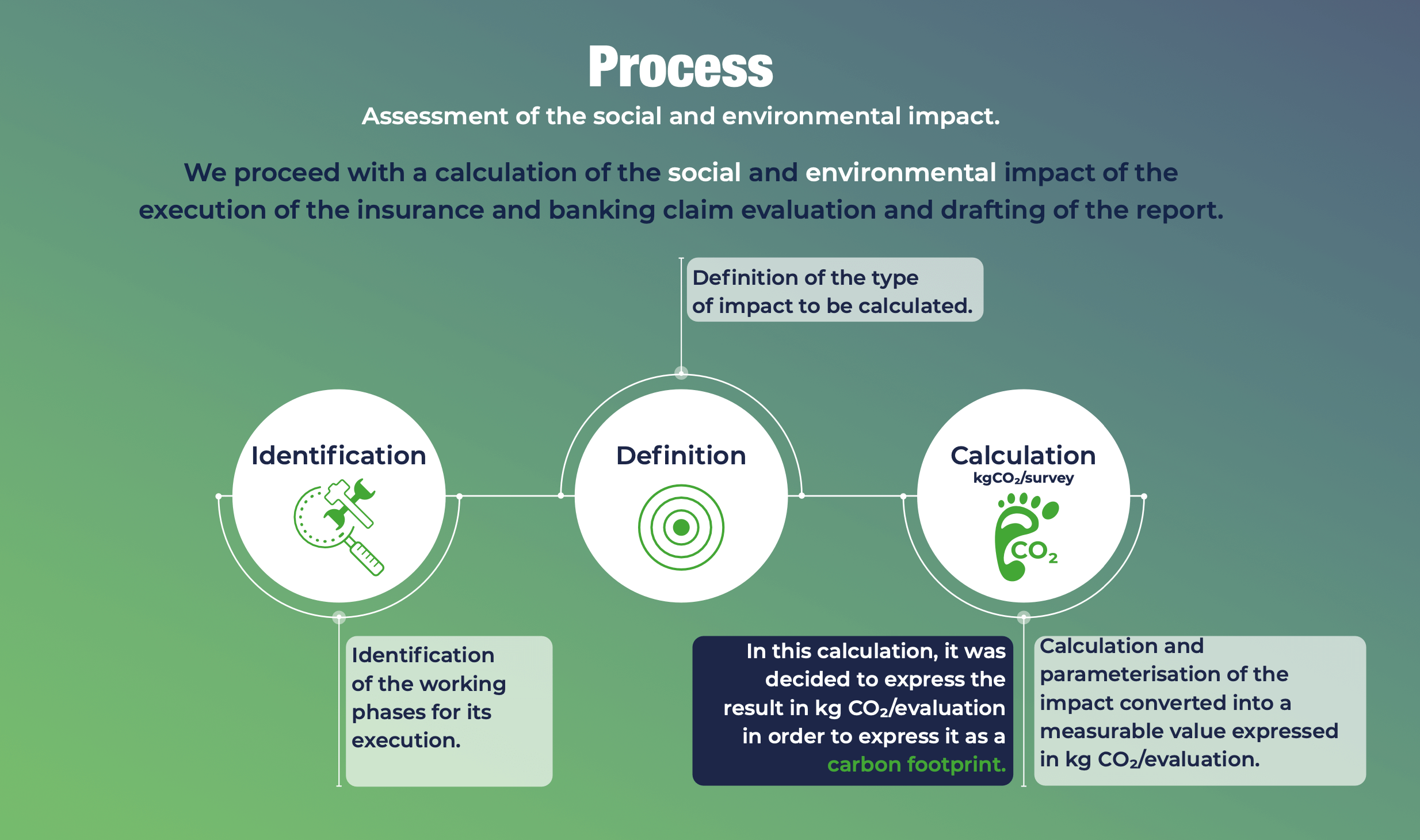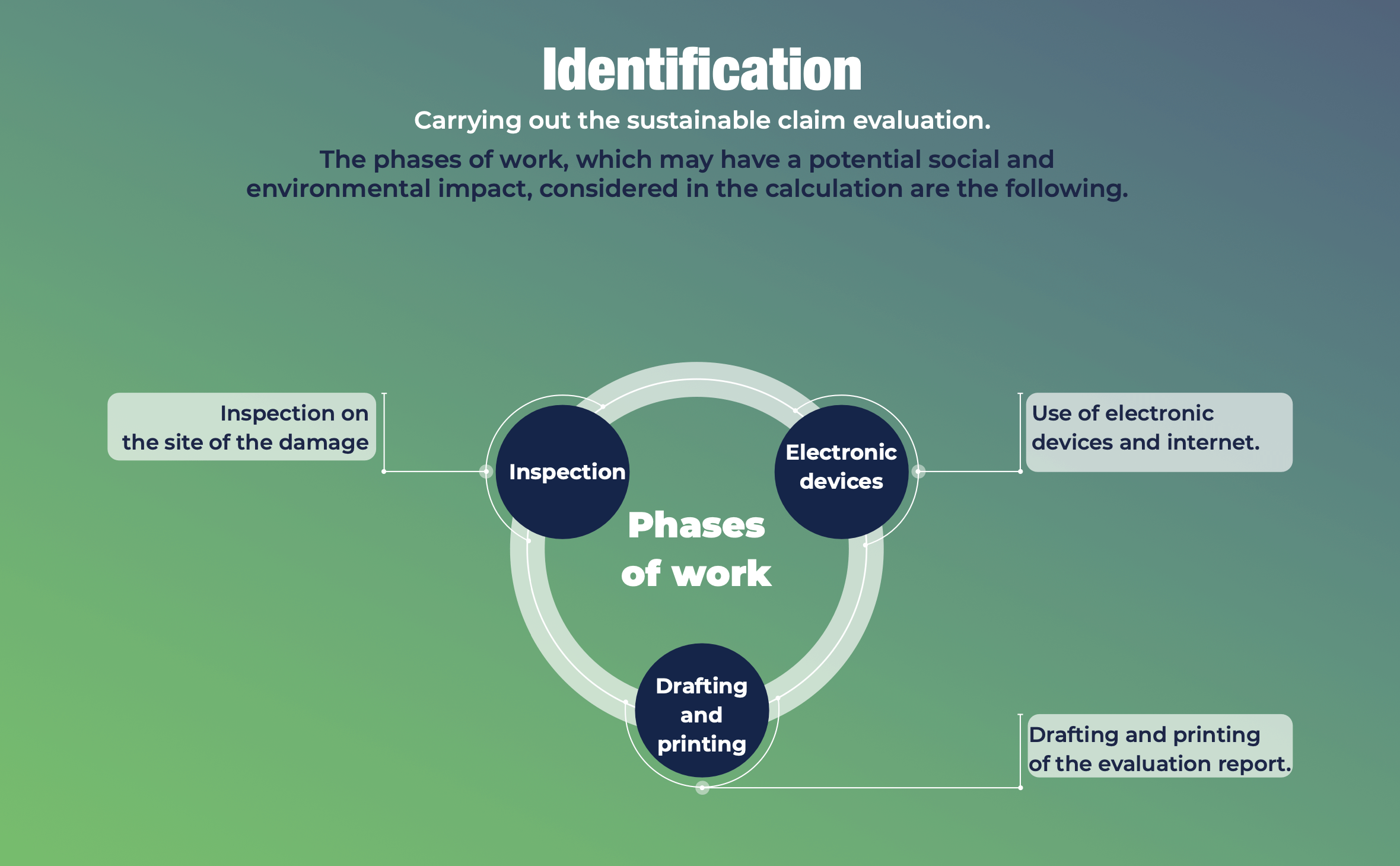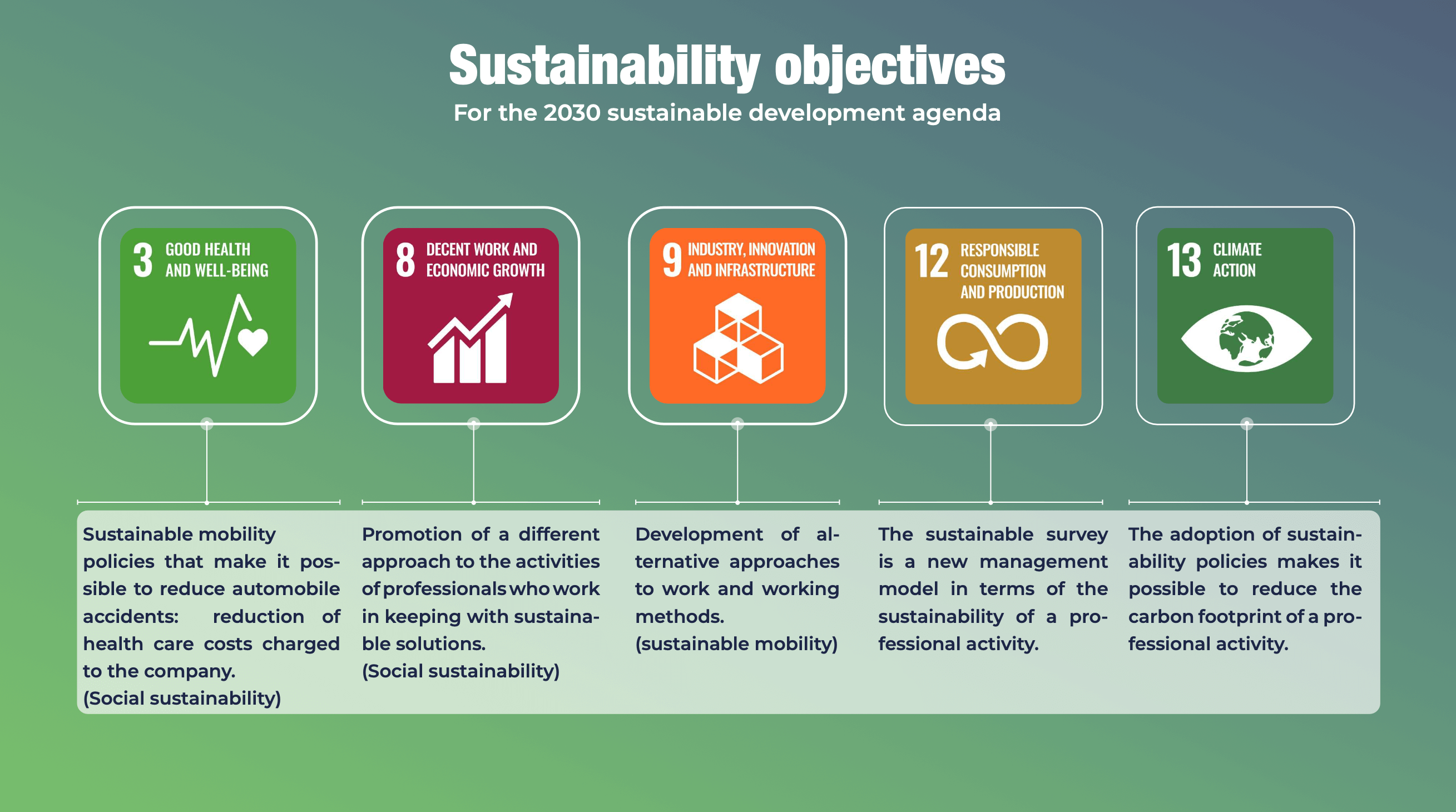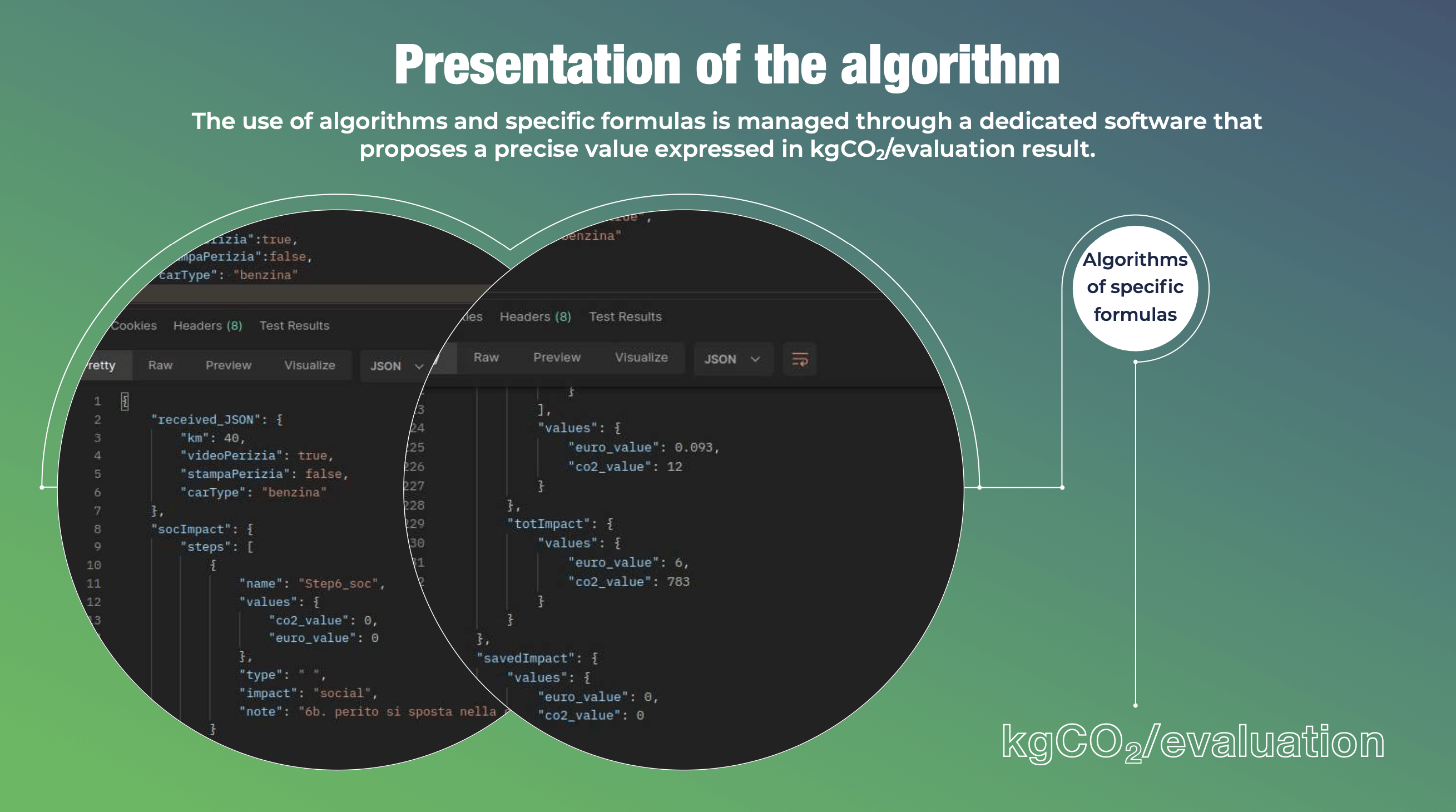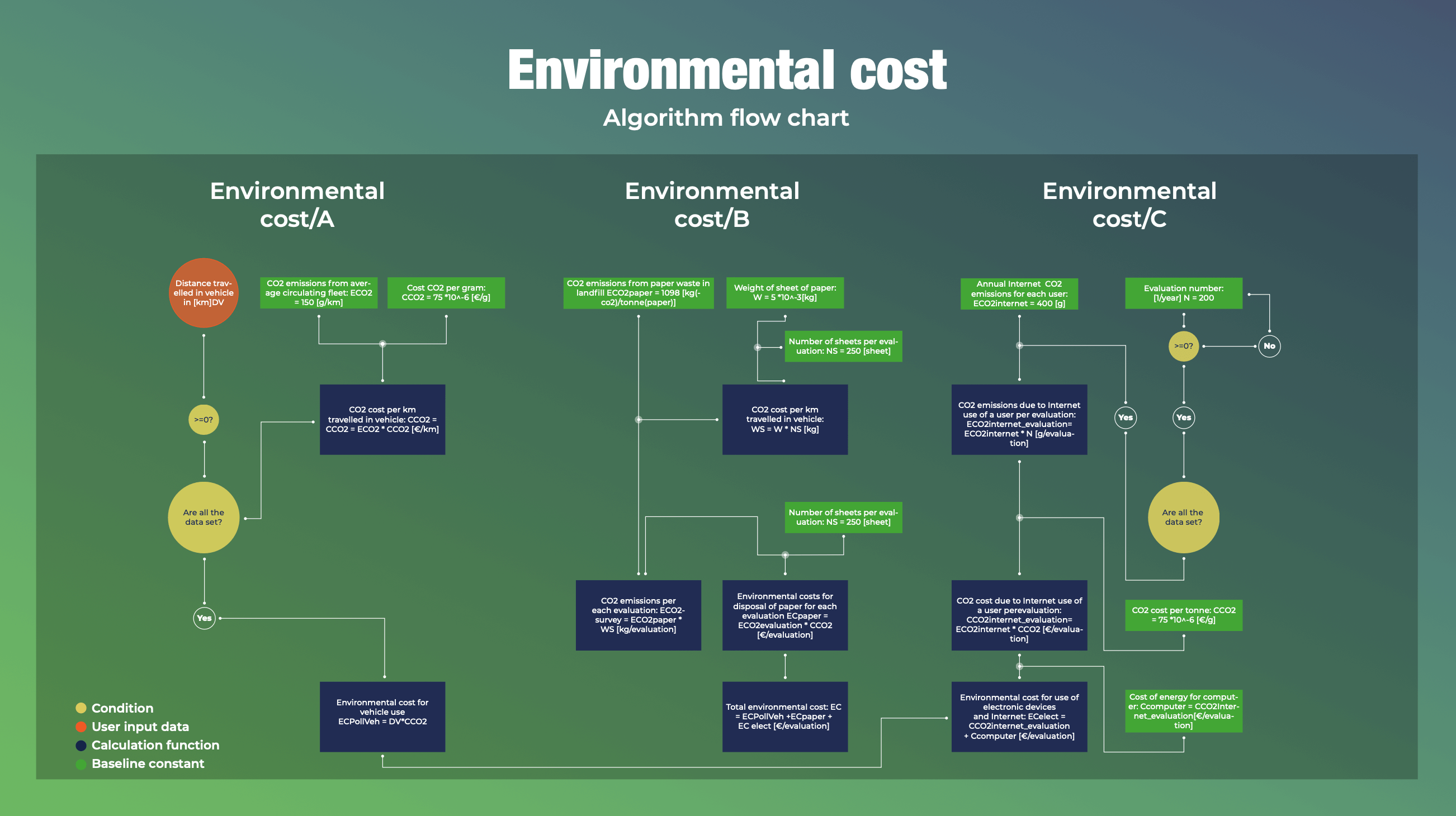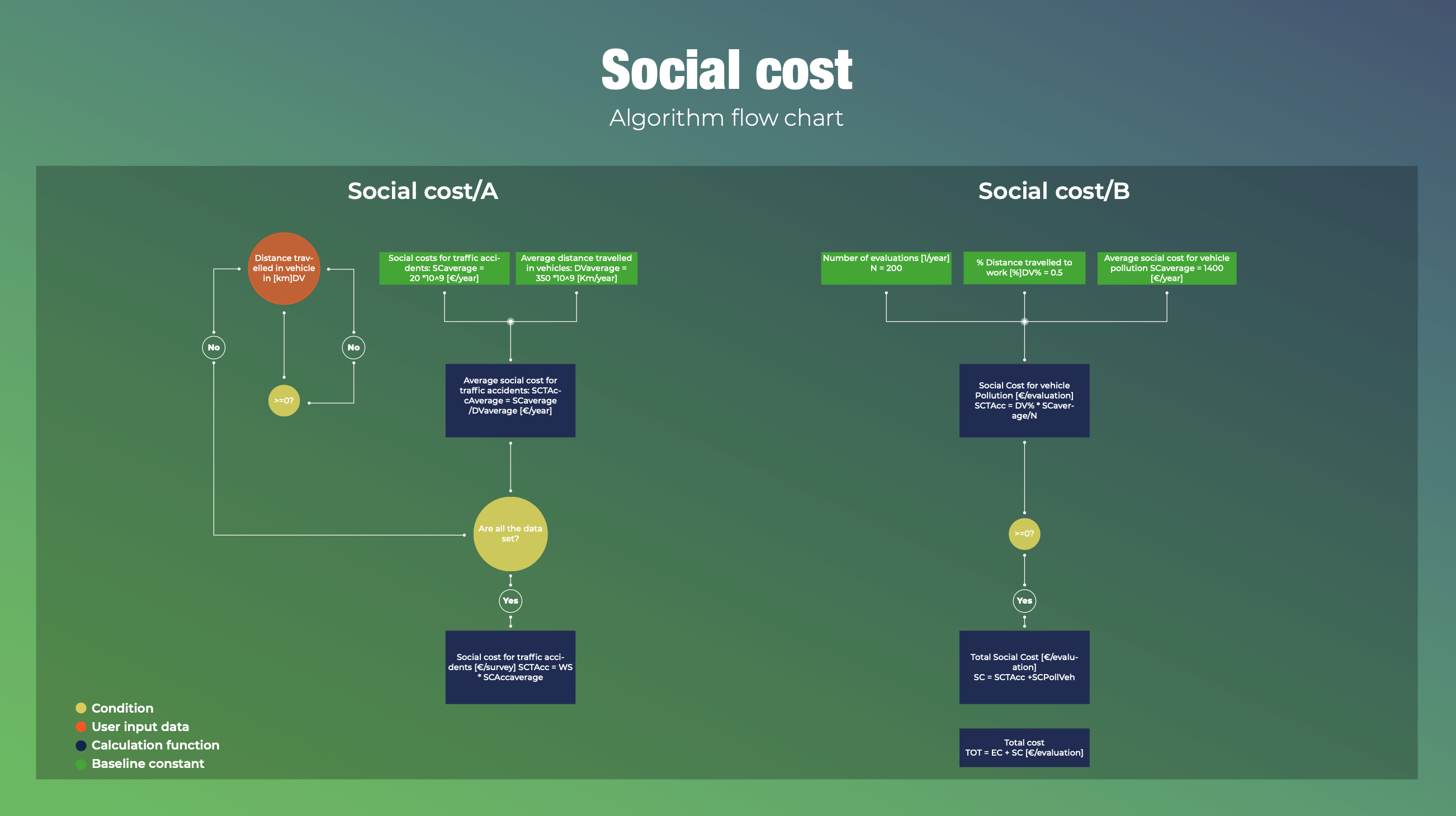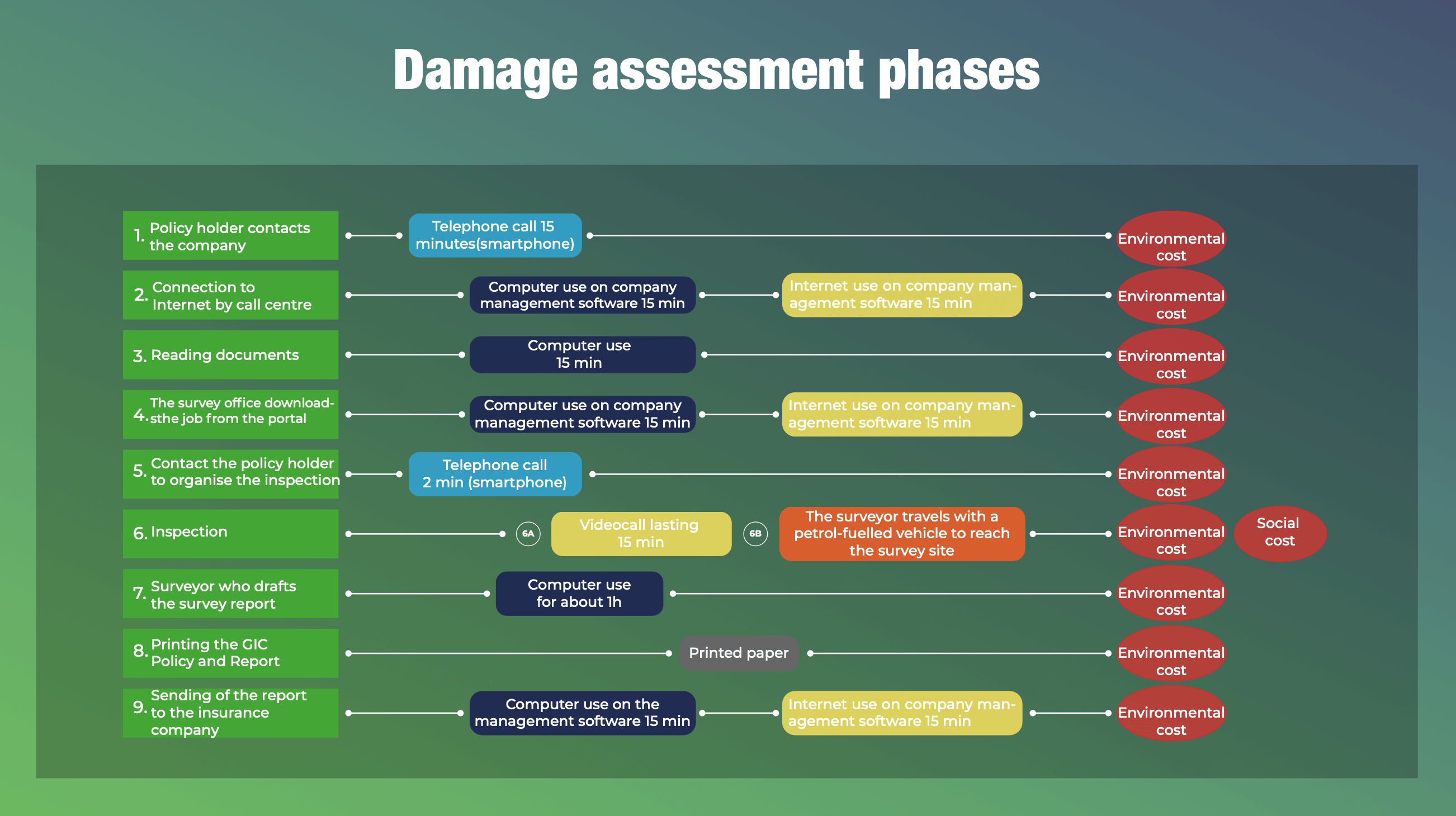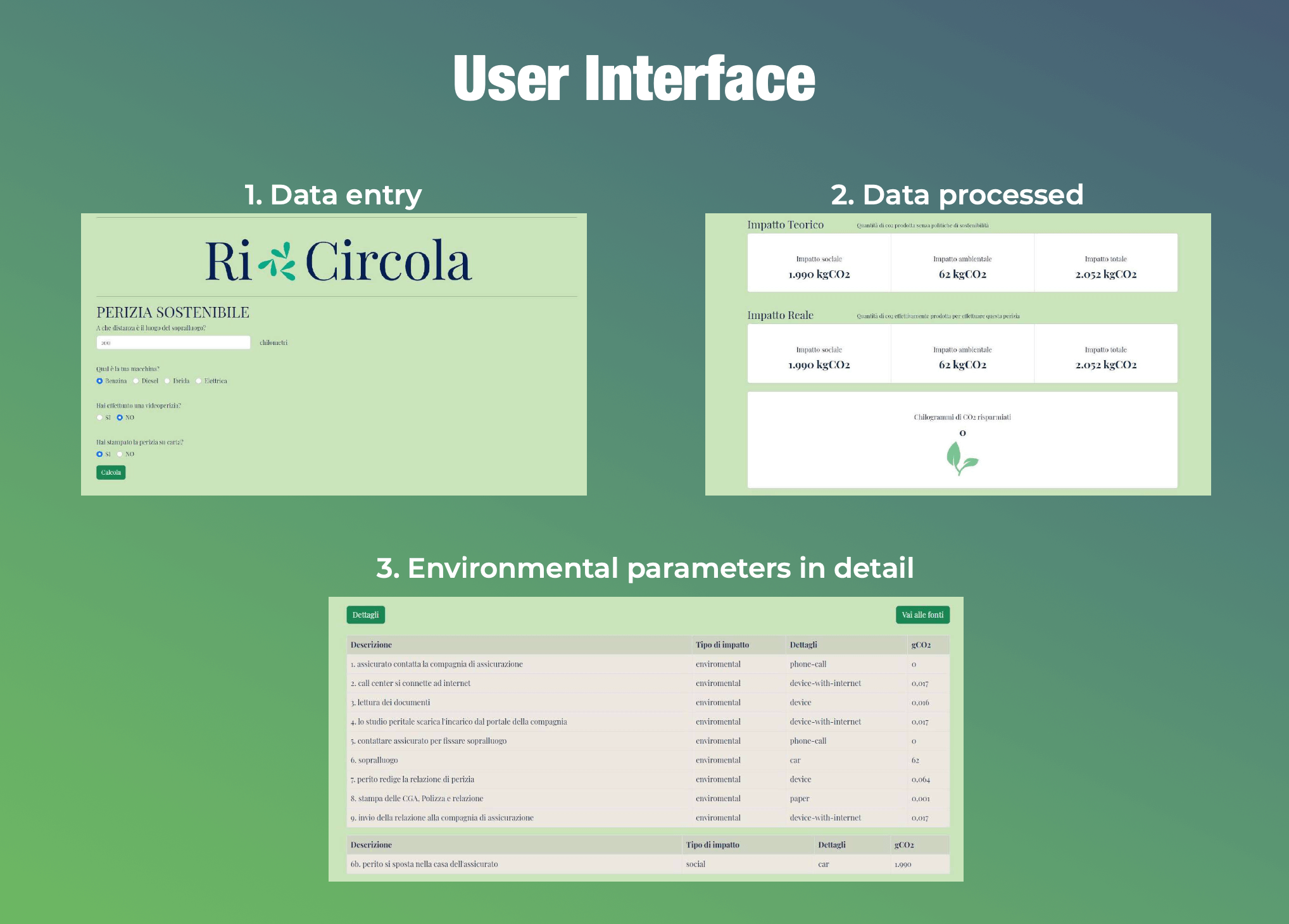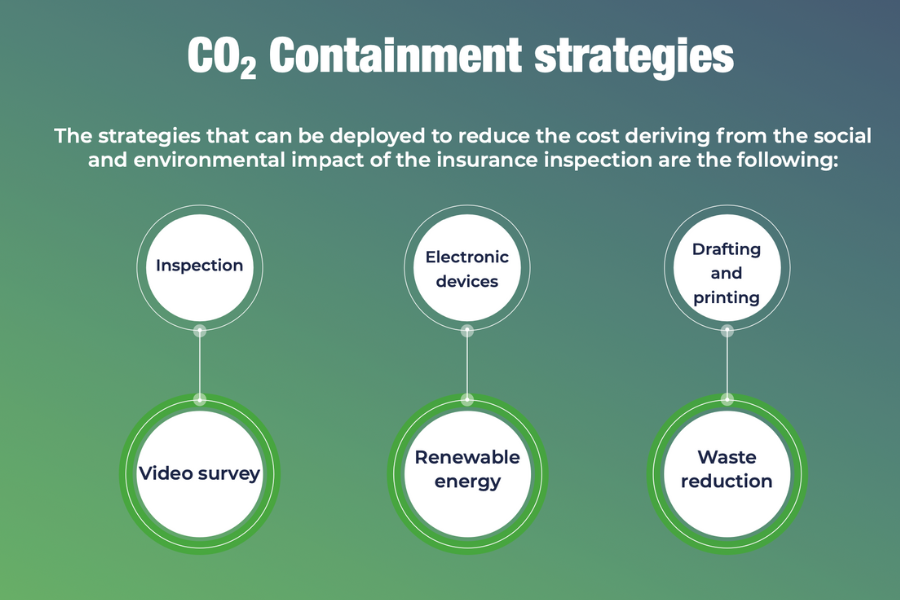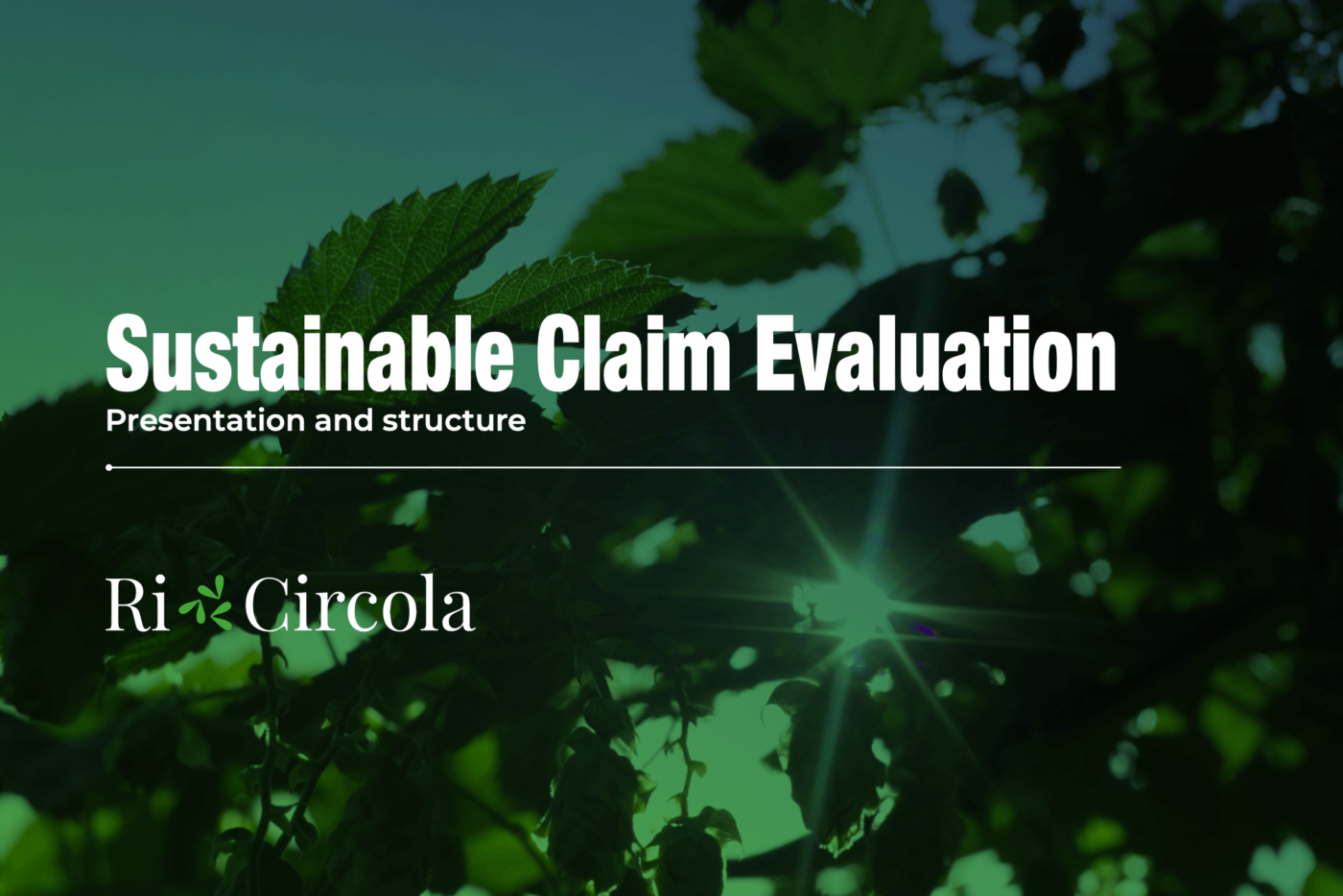
Sustainable Claim Evaluation
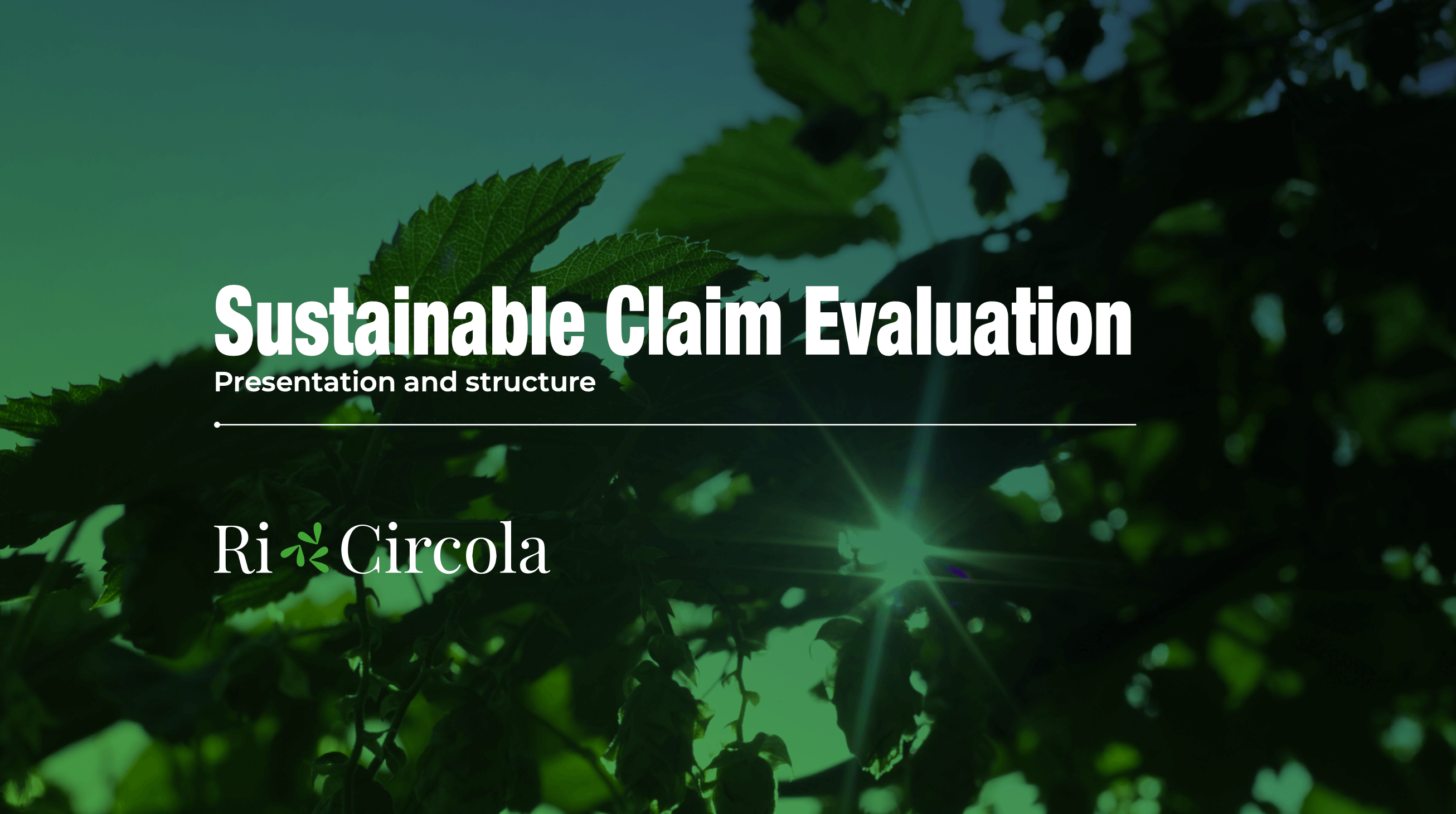
This project has been developed by Ricircola, an innovative start-up that works in the sustainability and circular economy sector in collaboration with CINSA, the National Interuniversity Consortium for Environmental Sciences.
The term «sustainable claim evaluation» is a registered trademark.
Italian Patent and Trademark Office Bulletin no. 784 dated 14 April 2023. Brand name: PERIZIA SOSTENIBILE (SUSTAINABLE CLAIM EVALUATION) Owner: RI.CIRCOLA S.R.L.
Application N.: 302022000149709
Class: 42
Date registered: 24/10/2022
The purpose of the work is to prepare a processing protocol to define the impacts associated with claim evaluation activities. This protocol contains criteria for the creation of a new model defined as a “sustainable claim evaluation”.
- Promotion of renewable energy.
- Define different labour management policies (sustainable mobility).
- Optimisation of waste production (reducing the use of paper).
- Defining the impact of sustainability of the surveyor’s professional activity.
Assessment of the social and environmental impact.
We proceed with a calculation of the social and environmental impact of the execution of the insurance and banking claim evaluation and drafting of the report.
- Identification of the working phases for its execution.
- Definition of the type of impact to be calculated.
- Calculation and parameterisation of the impact converted into a measurable value expressed in kg CO2/evaluation. In this calculation, it was decided to express the result in kg CO2/evaluation in order to express it as a carbon footprint.
Carrying out the sustainable claim evaluation.
The phases of work, which may have a potential social and environmental impact, considered in the calculation are the following.
Phases of work:
- Inspection on the site of the damage.
- Use of electronic devices and internet.
- Drafting and printing of the evaluation report.
The phases of work are in turn analysed according to a LCA (Life Cycle Assessment) logic, attributing to each phase a parameterised impact value in kg of CO2, thereby determining the carbon footprint.
- Social impact related to the social cost for road accident risks.
- The actual inspection by the loss adjuster at the site of the damage event implies the use of a means of transport (ex. vehicle), which may result in both social and environmental impact.
- Environmental Impact (CO2 production) due to the emissions of the means of transport.
This analysis process was expressed in a processing algorithm.
For the 2030 sustainable development agenda.
- Sustainable mobility policies that make it pos- sible to reduce automobile accidents: reduction of health care costs charged to the company.
(Social sustainability) - Promotion of a different approach to the activities of professionals who work in keeping with sustaina- ble solutions. (Social sustainability)
- Development of al- ternative approaches to work and working methods. (sustainable mobility)
- The sustainable survey is a new management model in terms of the sustainability of a pro- fessional activity.
- The adoption of sustain- ability policies makes it possible to reduce the carbon footprint of a pro- fessional activity.
The use of algorithms and specific formulas is managed through a dedicated software that proposes a precise value expressed in kgCO2/evaluation result.
The strategies that can be deployed to reduce the cost deriving from the social and environmental impact of the insurance inspection are the following:
- Inspection > Video survey
- Electronic devices > Renewable energy
- Drafting and printing > Waste reduction
By adopting all three of these strategies we can hypothesize annulling the cost of non-sustainability of the drafting of the survey reports, offering a database useful for the drafting of the corporate sustainability report.
Related Projects


